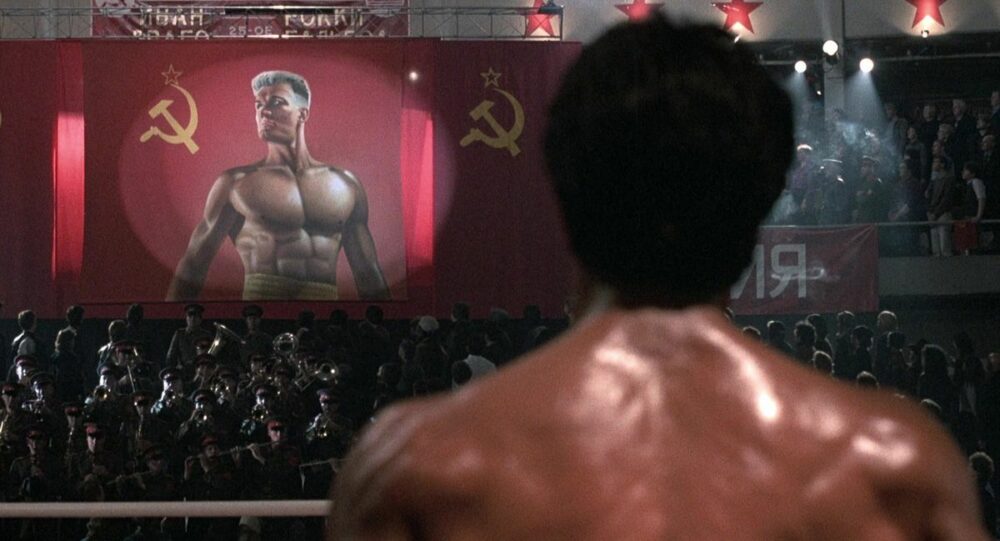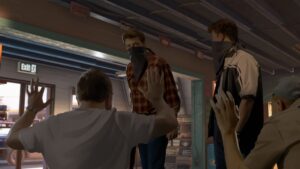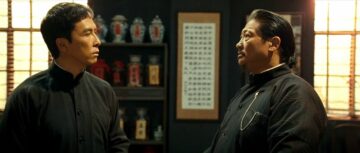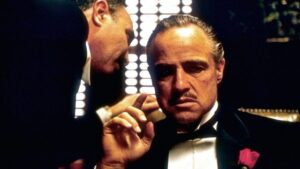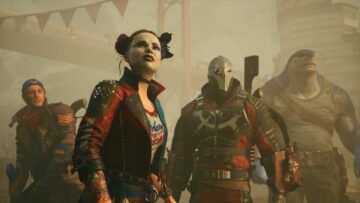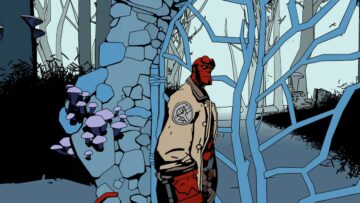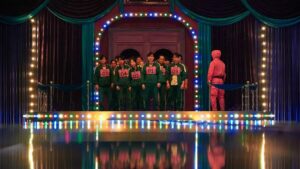This look at Sylvester Stallone’s director’s cut of Rocky VI was originally published in 2021, when the new edit was released. It has been updated and republished in conjunction with the new interest in the Rocky series — and particularly Stallone’s place in it — following Creed III.
There’s nothing inherently wrong with Rocky IV, a film of ultra-commercialized 1980s beauty. Sylvester Stallone savvily capitalized on the anti-Russian swagger of Rambo: First Blood Part II to bring Western audiences a crowd-pleasing Cold War underdog story. The enemy: Ivan Drago (Dolph Lundgren), the Soviet Union’s pulverizing, pugilistic savior. “Whatever he hits, he destroys,” Drago’s ashtray-voiced handler brags. When the Russian kills Rocky’s former-adversary-turned-best-friend Apollo Creed (Carl Weathers) in an exhibition match, it’s clear he’s got an all-American knuckle supper coming, and Stallone serves it up with loads of the MTV flash that was in vogue at the time.
Rocky IV is a significant film of its era. Nine movies into the franchise, it’s still the highest-grossing entry of the lot. It’s no one’s favorite Rocky movie, but no one in the history of the world has ever started watching it and turned it off. This is a scientifically proven fact. And it is a truth universally acknowledged that not a single person on the planet has ever been in want of a director’s cut.
Except for Stallone.
Given its remarkably slender narrative of 91 minutes, Rocky IV is more training montage than movie. So when Stallone announced his plan for an extended director’s cut, the notion sounded like grist for an SNL Digital Short. But the actor-director was deathly serious, and now, so is Rocky IV. This once-gaudy touchstone of ’80s cinema has been transformed into a strangely grim rumination on the warrior’s code. Visually and tonally, it’s a radically different experience. And let’s get this straight: those “42 minutes of new footage” promised in the press announcement are in there, but at 93 minutes (with credits), it also means a third of the movie that’s been a cable mainstay since the beginning of the glasnost era is gone. This is not your bearded Gen X uncle’s Rocky IV.
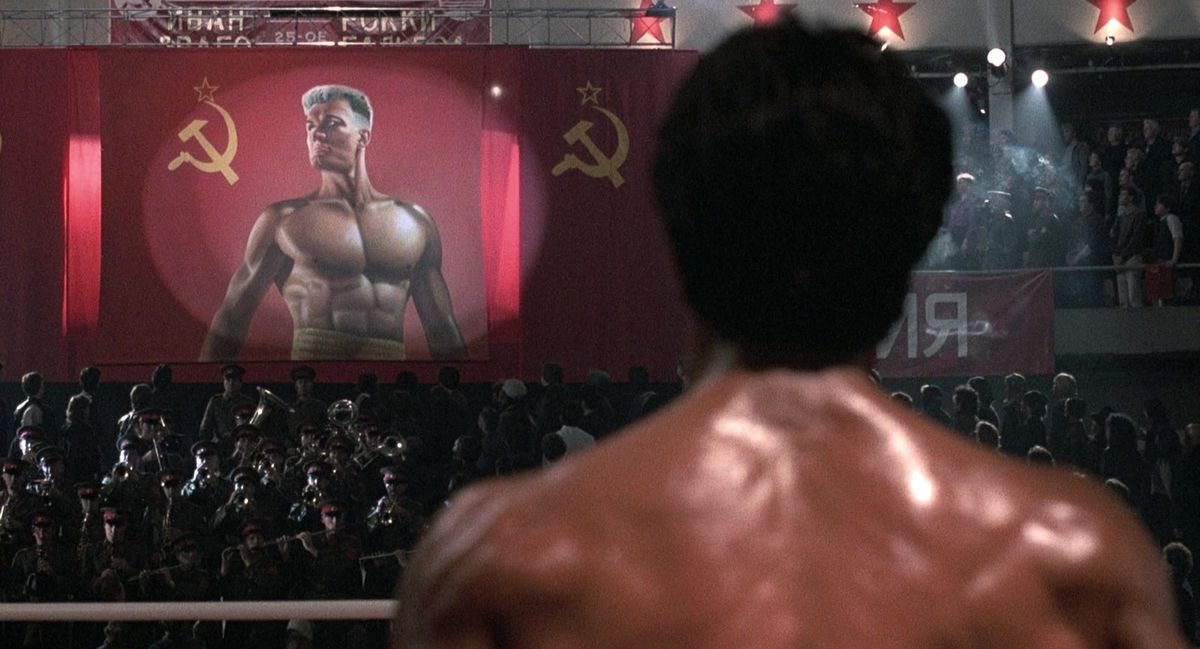
The original Rocky turned Stallone into a global superstar. It won the 1976 Academy Award for Best Picture over Network, All the President’s Men, and Taxi Driver. The sequels were all snapshots of Stallone’s career at the moment they were made: Rocky II is about an overnight success struggling with the demands of sudden fame; Rocky III contends with the loss of hunger that afflicts champions/stars at the top of their game; Rocky V charts the champion’s inevitable decline; Rocky Balboa refutes F. Scott Fitzgerald’s contention that there are no second acts in American life; and the Creed trilogy deals with the importance of legacy. But Rocky IV really isn’t about much of anything.
Apollo and Rocky are staring down impending retirement, but the former’s intimated fears of Russia taking over the boxing world with laboratory-created supermen run roughshod over any kind of meaningful introspection. There’s a touch of the John Henry folk legend in there, but at its core, it’s a revenge flick leavened by some saccharine lip service about Americans and Russians learning to view each other as fellow human beings (which the entire politburo stands up and cheers at the film’s conclusion).
So is Stallone’s recut version, Rocky IV: Rocky vs. Drago, an improvement? In several cases, absolutely. As depicted in a re-making-of documentary available on YouTube, Stallone is aghast at the number of badly missed punches that made it into the 1985 theatrical cut. He’s proud of the final fight’s ferociousness (as he should be, considering that a series of flush Lundgren punches to his chest left him with a swollen heart that landed him in the ICU), but in today’s blown-up HD world, those occasional whiffs are glaringly obvious. In the recut, almost every punch lands with a realistic thud, although some of the absurdly jacked-up sound design has actually been dialed down.
Stallone has also gone back and inserted numerous alternate takes that completely alter Apollo Creed’s tragic arc. Taking on Drago is no longer an act of stupid hubris, but an obligation, which is made clear in Duke’s eulogy, where Creed’s trainer and default father eloquently defends his fighter’s fatal decision: “The Warrior has the right to choose his way of life and his way of death.”
This echoes a newly added moment in Creed’s fight with Drago, where Rocky pleads with his friend, “Don’t do this to me.” “I’m doing this for me,” snaps Apollo. This gives Rocky’s inevitable bout with Drago a deeper purpose than vengeance; he, too, is obeying the warrior’s code, and he doesn’t care if everyone, even his loving wife Adrian (Talia Shire), believes it’s an act of suicide.
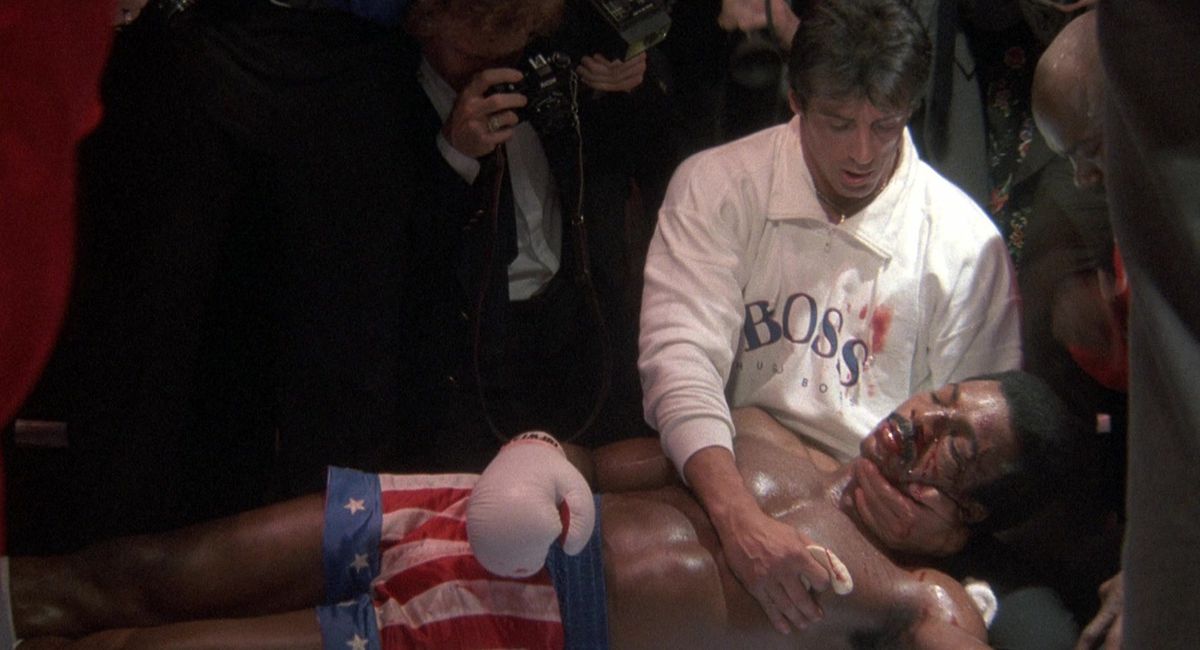
How this squares with Drago’s reconfigured arc is tricky. In the theatrical cut, Drago’s late-fight rebellion against his handlers felt like the act of a petulant child. (“I fight for me!”) In this version, Drago is portrayed as an awkwardly willing participant in Russian propaganda. He attempts to answer questions at the press conference, but is quickly interrupted by his chatterbox manager. There’s a human being underneath the robotic facade, and thanks to Creed II, we know what his resistance will ultimately cost him.
Unfortunately, Stallone eliminated Brigitte Nielsen’s indignant outburst, where her sincere-sounding claims of death threats against her husband are laughed off by the media. There may be a slightly more human dimension to Drago in the director’s cut (his bewildered perspective during James Brown’s performance of “Living in America” makes him feel like a 5-year-old kid getting lost in a carnival funhouse), but Nielsen’s apparatchik has been reduced to a cold-hearted caricature. This feels like an unfair tradeoff.
What Stallone can’t fully expunge is the essential silliness of a film that was shot and edited to appeal to music-video-mad viewers. He persuasively defends the power of montage in the documentary, and he hasn’t monkeyed around too much with those sequences in this cut. (The biggest change is giving the flashbacks in the “No Easy Way Out” sequence a sepia hue.) He beats himself up for omitting the meatiest elements of the drama, but the scenes he allows to breathe in this reworking are entirely at odds with the adrenalized aesthetic of the movie he crafted.
He’s washed out the comic book vibrancy of Bill Butler’s cinematography, which only makes this outsized entertainment film kind of dead inside. And most controversially of all, he’s eliminated all traces of Paulie’s robot, Sico. In doing so, he’s whittled Burt Young’s performance down to just about nothing, which blunts the impact of Paulie’s goofily touching pre-bout outburst of gratitude to Rocky. (“If I could just unzip myself and step out and be someone else, I’d wanna be you”) Paulie is an integral part of the Balboa saga, and he deserves better.
Stallone’s passion for the character of Drago is infectious, and watching him meticulously refine 35-year-old scenes in a Sunset Strip editing suite is an unexpected thrill. The warrior spirit is very much alive in the 76-year-old auteur. Stallone was left out of Creed III, and he’s been distanced from the franchise, since he no longer owns the rights. But he still feels a strong sense of ownership over the story and its legacy. No one should be surprised that he’s still invested in how people see these movies, and what they see when they watch them again, decades after release.
Rocky IV: Rocky vs. Drago is available for rental or purchase via Amazon, Vudu, and other digital platforms.
- SEO Powered Content & PR Distribution. Get Amplified Today.
- Platoblockchain. Web3 Metaverse Intelligence. Knowledge Amplified. Access Here.
- Source: https://www.polygon.com/reviews/22777136/rocky-iv-directors-cut-review-sylvester-stallone-rocky-vs-drago
- 1980s
- 2021
- a
- About
- Academy
- added
- aesthetic
- Against
- All
- Although
- Amazon
- American
- Americans
- announced
- Announcement
- Anything
- apollo
- appeal
- ARE
- around
- as
- At
- attempts
- audiences
- available
- award
- badly
- banner
- BE
- Beauty
- beginning
- BEST
- Better
- Biggest
- Bill
- blood
- book
- Boxing
- BREATHE
- bring
- by
- C
- cable
- capitalized
- care
- Career
- CARL
- carnival
- cases
- change
- Charts
- child
- cinema
- claims
- code
- Cold War
- COM
- coming
- Conclusion
- Conference
- considering
- Core
- cost
- could
- Credits
- Cut
- dead
- Deals
- death
- decades
- decision
- deep
- deserves
- Design
- different
- digital
- digital platforms
- Dimension
- documentary
- down
- Drama
- During
- elements
- Entertainment
- entirely
- era
- essential
- EVER
- Every
- everyone
- experience
- FAME
- favorite
- fears
- fight
- Film
- Final
- First
- Flash
- FLICK
- Following
- For
- Franchise
- friend
- from
- game
- Gaming
- getting
- giant
- Giving
- Global
- gratitude
- heart
- history
- hits
- How
- HTTPS
- human
- Hunger
- i
- Impact
- impending
- importance
- improvement
- in
- inevitable
- INSIDE
- Integral
- interest
- interrupted
- invested
- Is
- IT
- ITS
- Kills
- kind
- learning
- legacy
- Life
- like
- loads
- longer
- Look
- loss
- MAKES
- manager
- Match
- May
- meaningful
- Media
- Men
- MGM
- minutes
- more
- movie
- Movies
- narrative
- New
- Nine
- Notion
- number
- obvious.
- Odds
- of
- on
- One
- original
- originally
- Other
- Ownership
- P
- part
- passion
- People
- performance
- perspective
- picture
- place
- planet
- Platforms
- plato
- plato data intelligence
- platodata
- platogaming
- Polygon
- power
- press
- promised
- Propaganda
- proud
- proven
- published
- punch
- purchase
- purpose
- quickly
- radical
- Radically
- realistic
- Rebellion
- Reduced
- release
- released
- retirement
- revenge
- right
- robot
- Rocky
- Run
- Russia
- Russian
- s
- sense
- sequels
- Series
- serves
- Service
- several
- Short
- should
- significant
- So
- some
- sounded
- Sponsored
- started
- step
- still
- Story
- straight
- Strip
- strong
- success
- Suicide
- suite
- Sunset
- taking
- that
- The
- the world
- their
- Them
- These
- third
- threats
- time
- to
- top
- touch
- Training
- up
- updated
- version
- via
- View
- viewers
- vs
- war
- Warrior
- Watch
- way
- western
- What
- will
- willing
- with
- world
- X
- youtube
- zephyrnet
